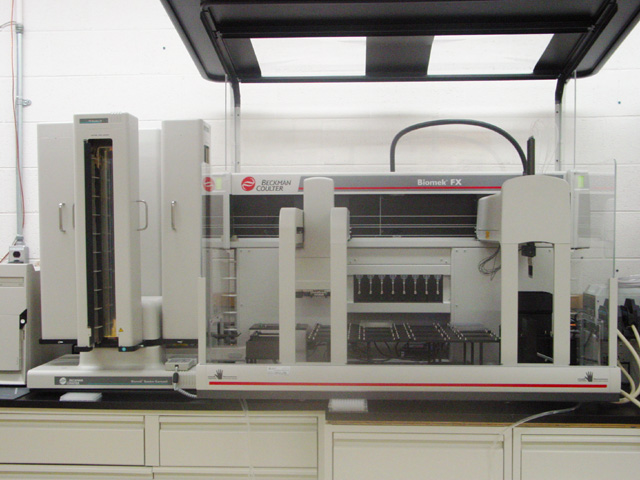Team:Northwestern/Characterization
From 2011.igem.org
| Line 11: | Line 11: | ||
<br><br> | <br><br> | ||
| - | == | + | ==Testing== |
<br><br> | <br><br> | ||
Revision as of 20:07, 25 September 2011
PROJECT

RESULTS

CONSIDERATIONS

ABOUT US

NOTEBOOK

ATTRIBUTIONS


Testing

The characterization of our parts was a long and detailed process involving weeks of testing and analysis. However, the general process was similar for most of our samples:
1) The night before testing, grow overnight cultures of all samples and controls in M9 Media.
2) In the morning, dilute all the cultures to an optical density of 0.05.
3) Let grow for approximately 3-4 hours, monitoring the OD to make sure it does not grow above 0.5.
4) When the OD of the samples reaches 0.5, distribute the samples into a 96 or 384 well plate.
5) While waiting for the cells to grow, dilute the autoinducers such that they will have the desired concentration when added to the well plate. Our concentration range was generally on the order of 1uM.
5) Simultaneously induce with PAI1 and/or PAI2 using a robotic liquid handling sytstem.
6) Put the plate in a Synergy fluorescence plate reader, take regular measurements of OD and fluorescence. For GFP, we used an excitation frequency of 485nm and an emission frequency of 528nm. For RFP, we used an excitation frequency of 580nm and an emission frequency of 610nm.
Analysis
A brief overview of our analysis shows that our GFP constructs were extremely successful. Both the Las and Rhl promoters had statistically significant differences from the controls at most or all of the autoinducer concentrations we tested. The Rhl promoters produced more fluorescence overall, but also had a higher concentration dependence. The Las promoters produced very similar fluorescence values at almost every autoinducer concentration. These results provide an excellent characterization of the original registry promoters they are based on, as well as the constructs themselves. They also provide a solid basis for a device that can detect the presence of Pseudomonas Aeruginosa.
Our RFP constructs were not as successful. The results were inconsistent and the signals did not seem to be correlated to the presence of the autoinducers. We are unsure of the cause for these problems, but we have put the parts in the registry for future teams to investigate.
In addition to working with the Las and Rhl dependent promoters already on the registry, we also characterized some new ones extracted directly from the Pseudomonas genome. This resulted in another potential set of promoters for use in a Pseudomonas detection device. In particular, the Rhl dependent promoter we extracted showed excellent sensitivity to PAI2.
For complete characterization information on all of our parts, please refer to our Biobricks page. Clicking on a part will take you to the Registry of Standard Biological Parts, where the complete analysis for that part is posted.
>
 "
"

